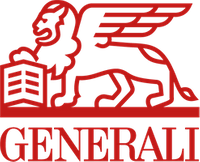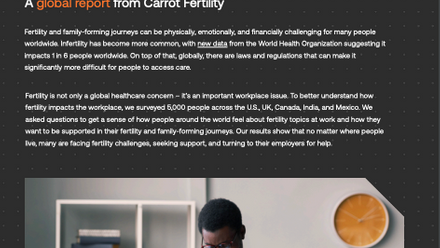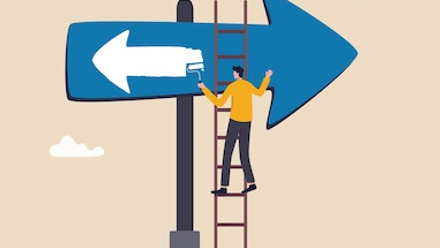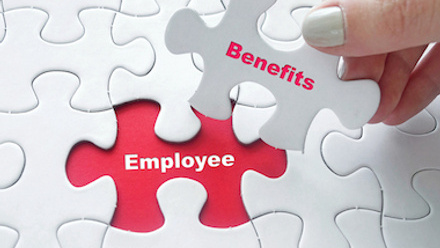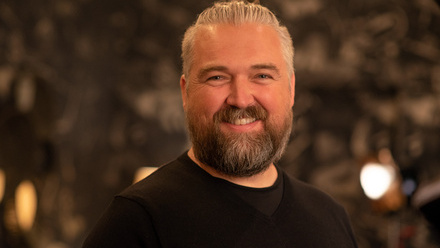The three ways in which tech is revolutionising global benefit strategies

Add to this mix the fact that global companies are working across multiple jurisdictions, all with differing requirements, and the monumental challenge becomes clear.
In short, the need for technology-based solutions is essential. Here are the three ways, in our opinion, that tech is helping companies address all these issues:
1. Extending wellbeing to company-wide, global audiences
The latest digital approaches are breaking down traditional cost and implementation barriers to company-wide, global health and wellbeing solutions.
Now, affordable wellness initiatives are available in markets where costs historically wouldn’t have made usual wellness return on investment (ROI) calculations work. This creates an opportunity for employers to consider a greater role in engaging their employees in health and wellbeing initiatives across the globe.
In the past it would have been impossible to match wellbeing initiatives to need thanks to the fact, for example, that traditional benefits such as private medical insurance are only available to some. Even there, it’s only possible to capture the health issues of those who claim as opposed to the problems people are living with on a day to day basis that might be contributing towards absence and presenteeism.
Digital solutions, on the other hand, are fully inclusive of everyone. These include health apps, wearables, virtual and Artificial Intelligence (AI) services.
2. Helping employers make informed healthcare risk management decisions
Managing costs and mitigating risk necessitates an understanding of employee health and wellbeing needs. This needs to be inclusive of everyone and the latest digital solutions – fully automated and low cost – are helping ensure a mass market reach, as mentioned above.
However, it’s safe to say that employers have struggled to find the time, resource and know-how to do anything useful with the anonymised data they afford.
Providers of these services are responding to this challenge with more detailed reporting and, in some cases, the ability to configure services according to changing needs.
Health apps
Health apps, such as CIAO from TicTrac, can provide more detailed reporting across three broad areas: engagement levels; health outcomes; and progress.
Information may be gathered on, for example: the number of people connecting with the app; progress in line with specific pre-determined outcomes; the accumulated increase in steps over a certain period; the accumulated increase in weight loss over a period.
Apps can then produce for employers GDPR-compliant, statistical reporting on all these aspects and more, to help them understand the key health challenges they face. They may then be configured around those issues and the same measures assessed again, alongside claims, over time with a view to evidencing tangible results.
Virtual & AI services
Meanwhile, 24/7 virtual GP services and AI symptom checkers, such as Babylon, can provide employers granular management information to help with budgeting, measurement of success and targeting of services.
Zoe Eccleston, Director of New Corporate Business at Babylon, commented: “Babylon continues to see increased usage across our growing range of new tech services, which we provide to many global organisations, especially the Virtual GP consultations, and with regards to return users to the AI chatbot and high completion rates in the most recently added health check tool.
“The anonymised data collected and shared with organisations helps identify their immediate health care issues and allows the organisation to implement appropriate solutions.”
Global Medical Dashboards
Meanwhile, in a bid to tackle annual medical trend increases and ensure more informed decision making on global health plans, health insurers and healthcare captives are now far more engaged in the health (and health delivery) of their covered populations.
Global Medical Dashboards provide an overview of claims experience and identify key medical trends and cost drivers to help clients make informed decisions on their global health plans, to better impact spending and diagnostic trends over time.
One dashboard provider very close to my heart further stepped up their game just last year in terms of content, form and functionality.
Reports are now available that present local country medical claims information in an online, tabular and highly interactive format. They offer employers practical insights into claims experience to more effectively select and implement healthcare initiatives that can help mitigate trends and cost drivers.
3. Streamlining the benefits selection & administration process
A variety of platforms and tools now help ensure engagement by allowing for personalisation, choice and flexibility: all aspects that employees are crying out for. Willis Towers Watson’s Global Benefits Attitudes survey found that those employees with choice and flexibility were twice as likely to feel their benefit programme met their needs.
James Lee, Senior Director, Product, LifeWorks by Morneau Shepell, comments that technology has hugely impacted the delivery of service to individuals. “Technology is largely responsible for our transition from a traditional EAP to a total wellbeing solution,” he adds.
“These [EAPs] tried and tested programs are proven to help the 10 per cent of the employees that seek them out when they reach a time of crisis. But the question for business leaders now is how that support can be moved upstream to reach the entire workforce proactively and preventatively?
“To scale to meet the needs of 100 per cent of an organisation’s people, technology must play a role. Smartphones help us be more productive, in terms of how we learn, how we communicate, how we do our banking and how we shop. These consumer-grade mobile-first user experiences create an environment that is free of friction and meets our every need as quickly and easily as possible.
“But when it comes to the wellbeing experience for employees, the story is different. The HR industry is saturated with point solutions that only focus on a small part of an individual’s wellbeing. Human Resources is one sector that has fallen behind in terms of adoption of consumer grade technology.
“HR professionals are often working with outdated tools and information that lacks context, as well as being tasked with 'keeping the boat steady', rather than driving change. But if the human is connected by the different pillars of wellbeing, then why aren’t we looking at tackling this is a more unified way? In a user experience that people love to use and keeps them coming back.”
For more information on global medical dashboards and wellbeing initiatives go to Generali Employee Benefits Networks.
The author is Tracey Ward, Head of Business Development and Marketing, Generali UK Employee Benefits.
This article is provided by Generali UK.
In partnership with Generali UK Branch
Generali UK provides insurance solutions to the UK employees of multinational clients.

